Werkzeuge
-
-
The new Mac Pro has been released, and we've managed to get our hands on the entry-level model, "inexpensively" priced at $2,999.
-
Tech Specs:
-
Quad-Core Intel Xeon E5 with 10 MB L3 cache and Turbo Boost up to 3.9 GHz
-
12 GB (three 4 GB modules) of 1866 MHz DDR3 ECC memory
-
Dual AMD FirePro D300 graphics processors with 2 GB of GDDR5 VRAM each
-
256 GB PCIe-based flash storage
-
802.11ac Wi-Fi wireless networking and Bluetooth 4.0 wireless technology
-
-
-
Contrary to popular belief, the new Mac Pro is closer in design to an aluminum beverage can than a trash can. (Not that there's anything wrong with trash cans—some of our favorite astromech droids are shaped like trash cans.)
-
The back side (if a cylinder can have a back side) contains the power button and electrical inlet, as well as a tidy array of ports:
-
3.5 mm speaker and headphone jacks
-
Four USB 3.0 ports
-
Six Thunderbolt 2 ports
-
Dual Gigabit Ethernet ports
-
HDMI 1.4 out
-
Looks like neither trash nor fixer can get in through the top of this bin. Time to investigate that enticing lock switch...
-
-
-
Here's a strangely un-Apple-like design choice: simply sliding the lock switch allows us to remove the outer casing of the Mac Pro. No stubborn pentalobe screws here!
-
What other improved repairability features will we find in this
soda candesktop computer? Only time and spudgers will tell.
-
-
-
With the cylindrical cover removed, we get our first peek inside the Mac Pro.
-
The dual graphics cards dominate the initial view. Their symmetry is broken only by the SSD cage nestled up alongside the second graphics card.
-
Giving the Mac Pro a little spin, we find neatly positioned vertical RAM slots at either side of the I/O panel.
-
-
-
Good news, everyone! The RAM in the Mac Pro Late 2013 is easily accessible and replaceable.
-
The 4 GB DDR3L SDRAM (three for a total of 12 GB) modules are labeled as Elpida EBJ04EG8BFWB-JS-F.
-
-
-
With a twist of a T8 screwdriver, the SSD assembly is easily removed from the device.
-
On board we find some rather familiar friends:
-
Samsung S4LN053X01-8030 (ARM) Flash Controller
-
Samsung K9HFGY8S5C-XCK0 Flash Storage
-
Samsung K4P4G324EB 512 MB RAM
-
This combination of hardware makes the Mac Pro's SSD suspiciously similar to those we've seen in the latest refresh of MacBook Pro Retina and MacBook Air.
-
To the point that only the last few digits of the model numbers are any different. Hmmm...
-
-
-
Regulatory markings have been relegated to the bottom cover/air inlet, where we find a few more informative tidbits:
-
The Mac Pro Late 2013 is identified as model A1481 with an EMC Number of 2630...
-
...and it's rated for 100-240 volts AC, making it a willing international travel partner.
-
There can only be one fan. The Mac Pro is vented by a single fan, which pulls air from under the case, through the core, and out the top of the case.
-
-
-
More deja vu as we uncap the AirPort card and find what looks to be the same configuration found in most Apple products today:
-
Broadcom BCM4360 5G Wi-Fi 3-stream 802.11ac gigabit transceiver
-
Broadcom BCM20702 single-chip Bluetooth 4.0 HCI solution with Bluetooth Low Energy (BLE) support
-
Skyworks SE5516 dual-band 802.11a/b/g/n/ac WLAN front-end modules
-
-
-
-
A view from above: The Mac Pro utilizes a giant triangular heat sink ("Thermal Core"), shared by the dual graphics cards and CPU.
-
We use our spudger to pry the graphics card data connectors from their sockets. This FCI Meg-Array connector is the same type used for the G4 & G5 PowerPC processor daughtercards, and looks to be a fully custom way of hooking up PCI-E, with many pins in a pressed-in connector.
-
-
-
With the Mac Pro's structure dominated by the central heat sink, we'd best start by peeling parts off.
-
A clamp and four screws hold each of the dual AMD FirePro D300 graphics cards in place.
-
Amidst the usual processing power and cost comparison with a similar home-built desktop PC, these graphics cards may be the key to Apple finally undercutting homebrew systems on a pure power basis.
-
-
-
The back side of each graphics card contains:
-
AMD FirePro D300 graphics processor
-
Elpida W2032BBBG 2 GB (8 x 2 Gb = 16 Gb = 2 GB) GDDR5 VRAM
-
Intersil ISL 6336 6-Phase PWM Controller with Light Load Efficiency Enhancement and Current Monitoring
-
The front side has the following ICs:
-
Fairchild Semiconductor DD30AJ
-
International Rectifier IR3575 Synchronous Buck Gate Driver with integrated MOSFET and Schottky diode
-
-
-
But wait, there's more. Just one more: a second, slightly different FirePro card.
-
The other important difference to note is that this card (and only this card) hosts the slot for the SSD. This seems to us like a potential opportunity for expansion—perhaps higher storage configurations make use of two of this variety, for doubling up on SSDs?
-
-
-
The FirePro bone's connected to the... um...
-
A novel disc-shaped daughterboard ties everything together at the base of the machine. Having spudgered away the ribbon cables, we flip it over for a closer look.
-
Dominated by inscrutable proprietary connectors, we can only hope the ICs on this interconnect board will tell us more about its purpose.
-
-
-
The logic board, dual graphics cards, and I/O port board all connect to this single board.
-
Wrangling all that data requires a small posse of ICs. We find:
-
Intel BD82C602J Platform Controller Hub
-
Renesas R4F2113NLG H8S/2113 16-Bit Microcontroller
-
ICS 932SQL435AL 3817528F
-
Texas Instruments LM393 Dual Differential Comparator
-
MXIC 25L6406E 64M-BIT CMOS Serial Flash
-
The back of the daughterboard features the same 980 YFC LM4FS1BH System Management Controller found in the Mid 2013 MacBook Air refreshes.
-
-
-
Pulling up a black cover grille, we discover where Apple hid the power supply: it's sandwiched between the I/O panel and the logic board.
-
The power supply's connecting cables are cleverly conceived, but a bit tricky to remove. Our handy Torx driver is helpful here...
-
...and with that, the I/O board and power supply peel away as a unit.
-
-
-
The logic board is the next logical step. The CPU is the last to go, left clinging to the side of the heat sink via a thin smear of thermal paste.
-
After teasing it away with a spudger, we decipher its markings:
-
Quad-Core Intel Xeon E5-1620 v2 with 10 MB L3 cache, clocked at 3.7 GHz, Turbo Boost up to 3.9 GHz.
-
While it took a bit of a trek, a CPU upgrade appears entirely possible—and well worth it, with an alleged cost savings of $1050 for an upgrade to 12 cores.
-
-
-
Let's identify the ICs on the rear of the logic board:
-
LGA 2011 (Socket R) CPU socket
-
Microchip EMC1428 8-Channel Temperature Sensor Monitor
-
International Rectifier IR3575 Synchronous Buck Gate Driver with integrated MOSFET and Schottky diode
-
NXP PA9517A Level Translating I2C-Bus Repeater
-
Texas Instruments 58872D
-
The front side of the logic board:
-
Intersil ISL 6367 Hybrid Digital Dual PWM Controller
-
-
-
-
The front side of the port board:
-
PLX Technology PEX8723 PCI Express Switch
-
Intel DSL5520 Thunderbolt 2 Controller
-
Cirrus 4208-CRZ Audio Codec (seen in the MacBook Pro 15" Retina Display)
-
Intersil 14AIRZ F335QV
-
Texas Instruments 58888D
-
Texas Instruments 58872D
-
Also along for the ride is a standard BR2032 CMOS battery.
-
-
-
With a rated output of 12.1 Volts and 37.2 Amps, we're looking at a 450 Watt power supply. The power supply has no dedicated cooling, and relies on the main system fan to keep cool—allowing the Mac Pro to idle at a whisper-quiet 12 dBA.
-
And a quick look at what's left on the behemoth of a heat sink: Heavy gauge, flat power cables run from the PSU to the logic board and graphics cards, and remain intertwined in the heat sink.
-
-
-
With the I/O panel cover belly-up, we spot one last trio of unidentified ICs, labeled as follows:
-
Two M430 V380 H 39K CX88 G4
-
One M430 V380 H 39K CX7S G4
-
-
-
Mac Pro Late 2013 Repairability Score: 8 out of 10 (10 is easiest to repair)
-
For being so compact, the design is surprisingly modular and easy to disassemble. Non-proprietary Torx screws are used throughout, and several components can be replaced independently.
-
The easily-opened case is designed to make RAM upgrades a snap.
-
The fan is easy to access and replace.
-
While it will require a bit of digging, the CPU is user-replaceable—meaning intrepid fixers should be able to save considerably by upgrading from the base-level processor configuration.
-
There is no room, or available port, for adding your own internal storage. Apple has addressed this with heaps of Thunderbolt, but we'd personally rather use the more widely compatible SATA if we could.
-
With some proprietary new connectors and tight cable routing, working on this $3,000 device without a repair manual could be risky.
-
58 Kommentare
The microcontrollers on the inside of the port panel must be for the illumination that lights up the ports. Somewhere there's a sensor that knows when you're turning the thing around too. Do they use a MEMS sensor for that?
satiee -
Idk but it will be cool to have a macos function
The connectors shown in Step 8 appear to be identical to the CPU sockets used in the PowerPC G3 & G4 processors. Good connectors, solid, never had an issue with them. No need to reinvent the wheel.
What chip handles wifi?
benaggus -
should be hidden inside the fan, packed together with most of the beamforming antenna array and an extra antenna into the I/O housing Apple got really innovative this time, they managed to squeeze everything into this tiny can
Tom Chai -
It is under the Roof, the black cover in the middle of the fan. The card handles Airport and Bluetooth. There are four antennas connected to the card.
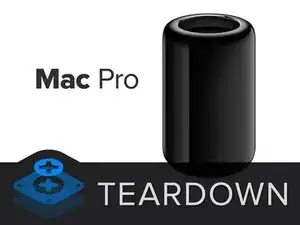
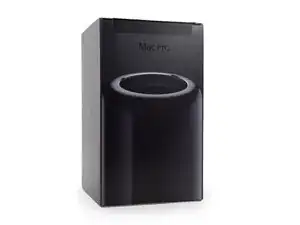
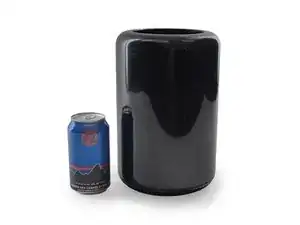
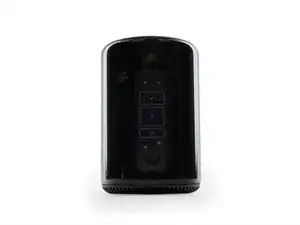
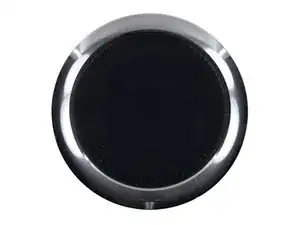
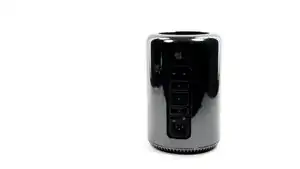
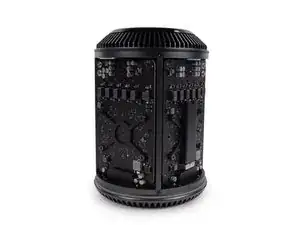
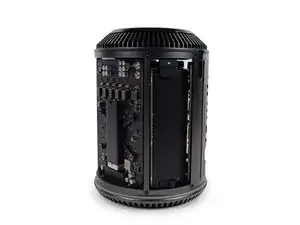
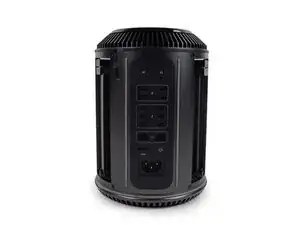
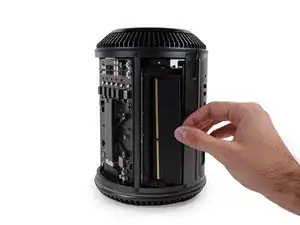

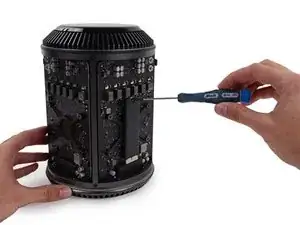
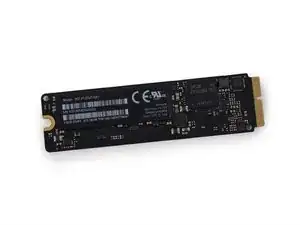
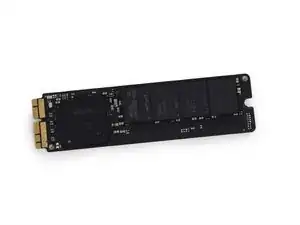
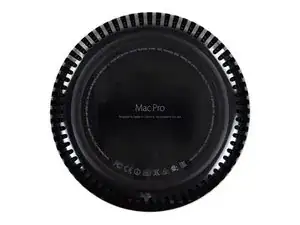
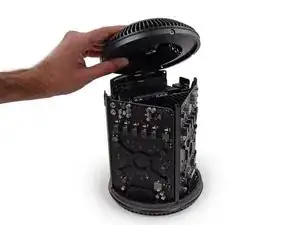
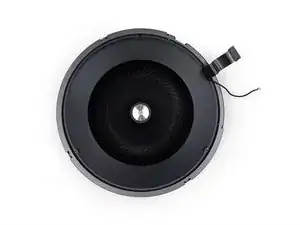
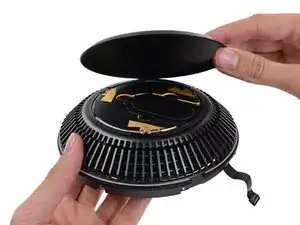
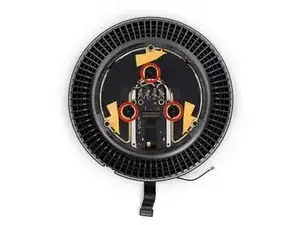
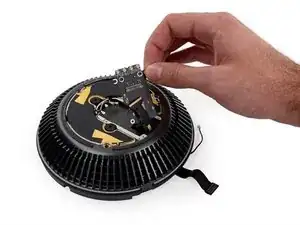
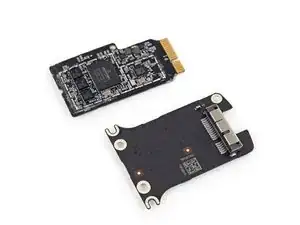
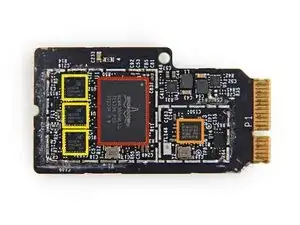
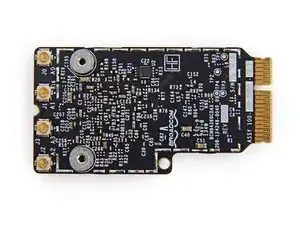

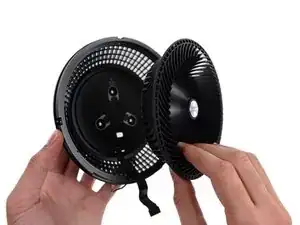
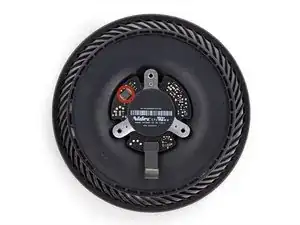

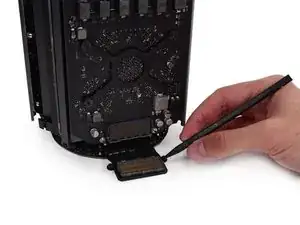
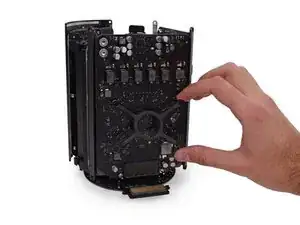
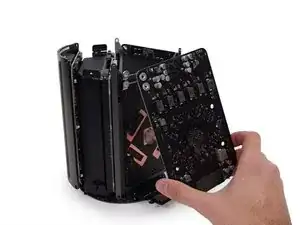
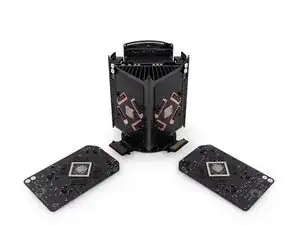
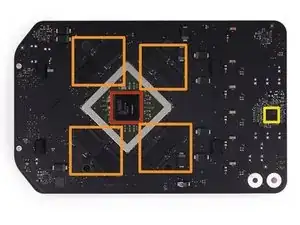
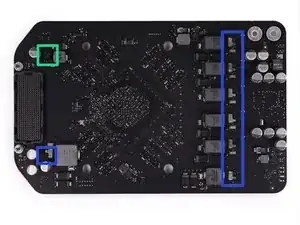
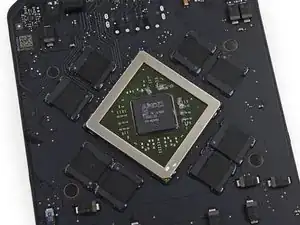
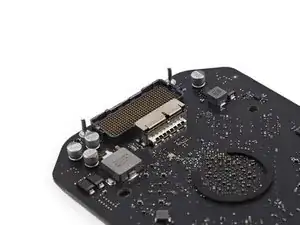
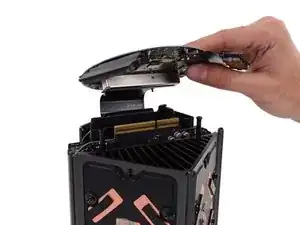
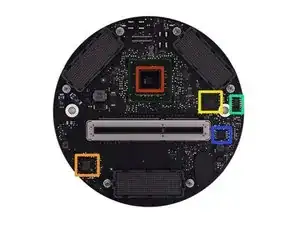
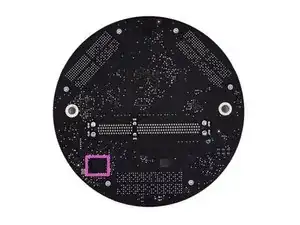
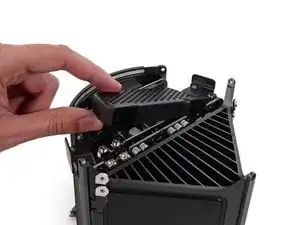
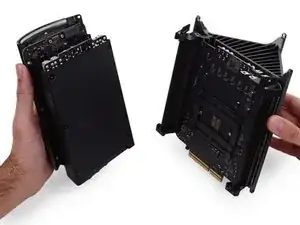
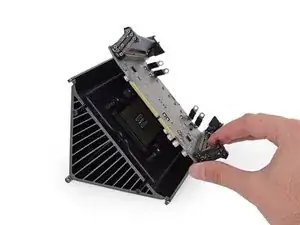
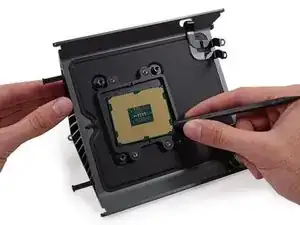
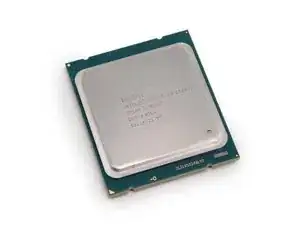
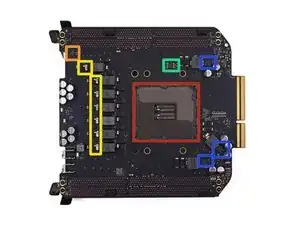
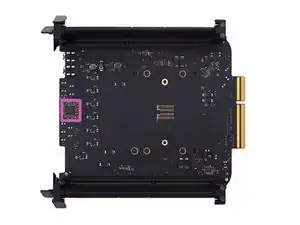
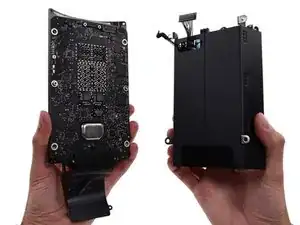
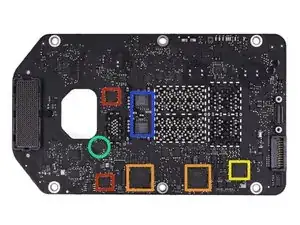
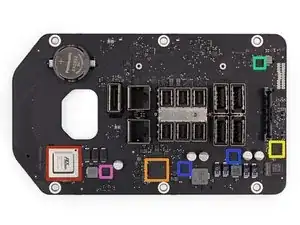
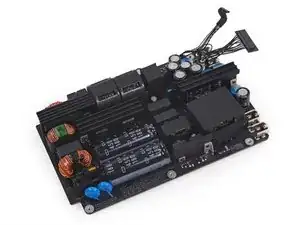
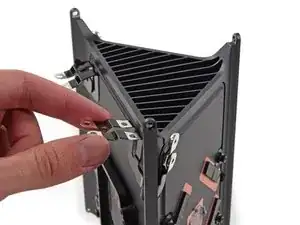
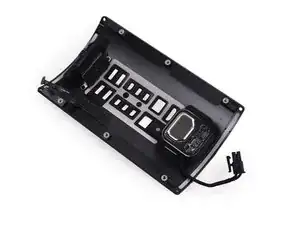
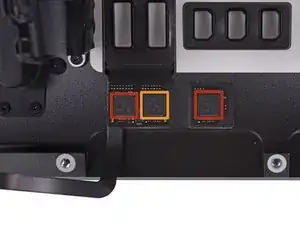
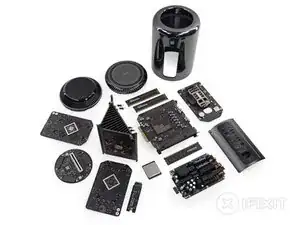

Once again, another iFixit teardown that subtly bashes Apple products for not conforming to their definition of repairability. It is getting tired. And the humor, isn't.
MojoFix -
How is an 8 out of 10 Apple Bashing? REALLY??!!!
Aaron Glendenning -
I agree. The ability to add internal storage doesn't make a computer more "repairable". It should be a 9.
topo gigio -
@Mojofix: going to have to agree with Aaron, 8/10 on a device packed with proprietary components and connectors seems kind of high actually. Are you just upset that they put the word "inexpensively" in quotes?
Nathan Macey -
Name one proprietary connector.
Mark -
PC repair should not require a putty knife. Most Apple products are built like consumer toys that will be thrown on the scrapheap as soon as the new model comes out.
The fact that a Mac Pro can be repaired is not something that should trigger any special praise. These machines have always been different from Apple's other products. People should expect better of them. It's good that the new Pro is as repairable despite their proprietary parts. However, it's just what should be expected.
jedidiah -
"PC repair should not require a putty knife."
Who says?
And being that this is not required here, WTH is even your point?
"Most Apple products are built like consumer toys that will be thrown on the scrapheap as soon as the new model comes out."
Um, apparently you have never checked the Mac resale market.
You simply have no idea what you're talking about. At all.
Mark -
Mark you just murdered someone!
kcbravo -